A Creative Practice For Staying Present
Because you can't perform an autopsy unless you're in the room with the body
I fell ill late Monday night and am only just emerging from the cocoon of my bed. It’s just a cold or some-other similar, miserable virus, nothing serious—just annoyingly draining and uncomfortable. I sucked down more cough drops than the package recommends, but the haze between my ears has made caring about recommended doses, irrelevant. You’ve been there, too. You know what I mean. When our capacity is diminished, it’s not uncommon for us to stop caring about certain things, even if it’s not a conscious decision.
I’ve been thinking about this a lot lately—this diminishing capacity, this struggle to keep caring about certain things. I think about this often, as it pertains to current events. I confessed to a friend the other day that, lately, I find myself sort of dissociating when I read the news. Perhaps I should say that I find myself having to expend an inordinate amount of energy trying not to dissociate when I read the news.
Let’s all take a deep breath—I’m not going to get on my political high-horse today. I’m just saying these are hard times. The days are evil1. We are all weary for our own reasons.
Over the last couple of years, I’ve talked a lot about how engaging with art has been a life-altering tool for me. This is not all of me but it is one part of me, and currently, it’s the wolf I’m choosing to feed.2
Making art helps me stay present in moments where it feels hard to engage. Somehow, when my hands are sticky with glue and smeared with pastel chalk, I am in two places at once, yet not fragmented. All of the tactile reminders keep me grounded HERE on terra firma, while simultaneously allowing me to get lost in my thoughts, and prayers, and in images, and color, and feelings.
But, to be fair, it’s not just the making of art that I’m engaging with more, it’s the combination of art and prayer—art as a tool for spiritual formation. In her book, The Soul Tells A Story, Vinita Hampton Wright writes, “the more I talk with artists, the more convinced I am that mystical experiences are not uncommon in the course of creative work. (Here, I use mystical in its most general sense.) That’s because sometimes creativity taps that deepest—beyond conscious—part of the well.” In my own creative practice of prayer, I have found this to be true.
I have been changed by my own personal encounters with the Holy Spirit through art. It’s not only me that has been changed by this practice. For 10 years, I’ve been privileged to witness women at my retreats changed by engaging with Art as a means of prayer. As my friend Brady said yesterday, “creativity is dangerous”,3 it can be a catalyst for change, and most certainly an avenue in which we can experience the transformative power of the Spirit. Vinita goes on to write that “one of the beauties of creative work is that it’s based in the spiritual life and can thus take you where you need to go when the time is right.”4
“the more I talk with artists, the more convinced I am that mystical experiences are not uncommon in the course of creative work. (Here, I use mystical in its most general sense.) That’s because sometimes creativity taps that deepest—beyond conscious—part of the well.”
This fall I performed my first autopsy.
Okay, well, let me explain—
On a walk one afternoon I was working through a particularly painful experience in my mind, turning the whole situation over and over looking for clues—signs of what had gone wrong. How did something that seemed so good, wind up so terrible wrong? how did this thing die?, I wondered. As I lapped my neighborhood, I realized that, thanks to a mystically timed podcast-listening5, I was performing a spiritual autopsy. As I did a little research to support the metaphor that was unfolding, I realized that the Christian practice of the Examen can be loosely overlayed with the practice of an autopsy.6
The Examen is a helpful practice on many levels, but one of the things that is really important about it is that you cannot practice it while dissociating from your day. The questions and invitations to reflect help ground you in the actual experiences of your day, in real events, in tangible encounters with others and with God. It made perfect sense to me that if the Examen could sort of serve as an autopsy of the day with God, then there was a strange, but lovely way, that these two seemingly unrelated practices could hold hands creatively.
I tested this theory even further when I created and hosted my workshop, Autopsy of a Season in January. The feedback was positive. The practitioners who played along “got it” and the Holy Spirit met them there too.
I’m delighted to share that workshop is now available as a digital offering on my website. I re-worked the whole process and went through and filmed the creation of my own piece of art for it, and built a self-paced course for anyone curious enough to perform their own Autopsy of a Season.7
In her book8, Vinita goes on to write that “one of the reasons I consider creativity to be highly spiritual is that it requires faith the way that spirituality requires faith. In both you must believe that there is something bigger than you overseeing your life and keeping you safe. My Christian belief is that God oversees and protects my faith and my creativity. More and more they are one and the same to me.”
I believe this to be true. God uses all kinds of creative ways and means to speak to us, and that day on a walk, God spoke to me through a single word—autopsy—and gave me a vision for a creative tool, that some, (including me) have found helpful for prayerfully processing their experiences.
If you’re ready to perform your first autopsy, you can join me here.
Be very careful, then, how you live—not as unwise but as wise, 16making the most of every opportunity, because the days are evil. (Ephesians 5:15-16)
The parable of the two wolves is a Native American tale referenced in many places throughout history. Here is one MD’s explanation of how this can be helpful. https://www.psychologytoday.com/us/blog/child-development-central/201507/feed-the-right-wolf
Brady Black is one of my upcoming guests on my podcast and I can’t wait for you to hear that conversation. After we got off the call I thought of a thousand more questions I didn’t get to ask him.
Here, Vinita is talking about how when writing, one might stumble into a story around family wounds and through the writing, discover something deeper beneath the surface that needs healing. While Vinita’s book is geared towards writers, so much of writing advice can be easily applied to other creative practices as well.
True confessions-I’m a huge crime junkie. I was listening to a podcast and when the word “autopsy” was used, it was as if the world fell away from my feet and I became completely lost in thought. I cannot tell you what podcast it was, what case was being examined, or any other details, other than that hearing one single word launched me onto a whole journey.
I am not a medical examener and have never performed, nor been present at a bodily autopsy. I am however, well practiced in performing spiritual autopsies, and in my mind, the metaphor holds as loosely and imperfectly as all metaphors are want to do. If it doesn’t hold for you, that’s ok.
The word, season, is being used liberally here. This could be a situation, a specific experience, a relationship, or a career—anything that has “died” in your life can be autopsied.
If you want to order a copy of Vintia’s book, Id’ love it if you ordered it through Nooks, owned by my friends, Shawn and Maile Smucker. You can do that through their Bookshop page.

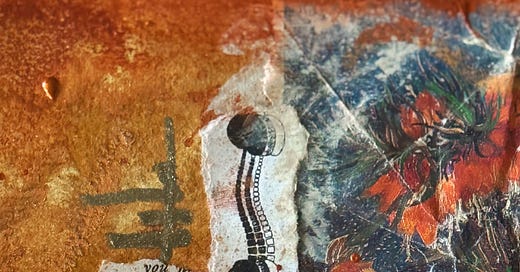



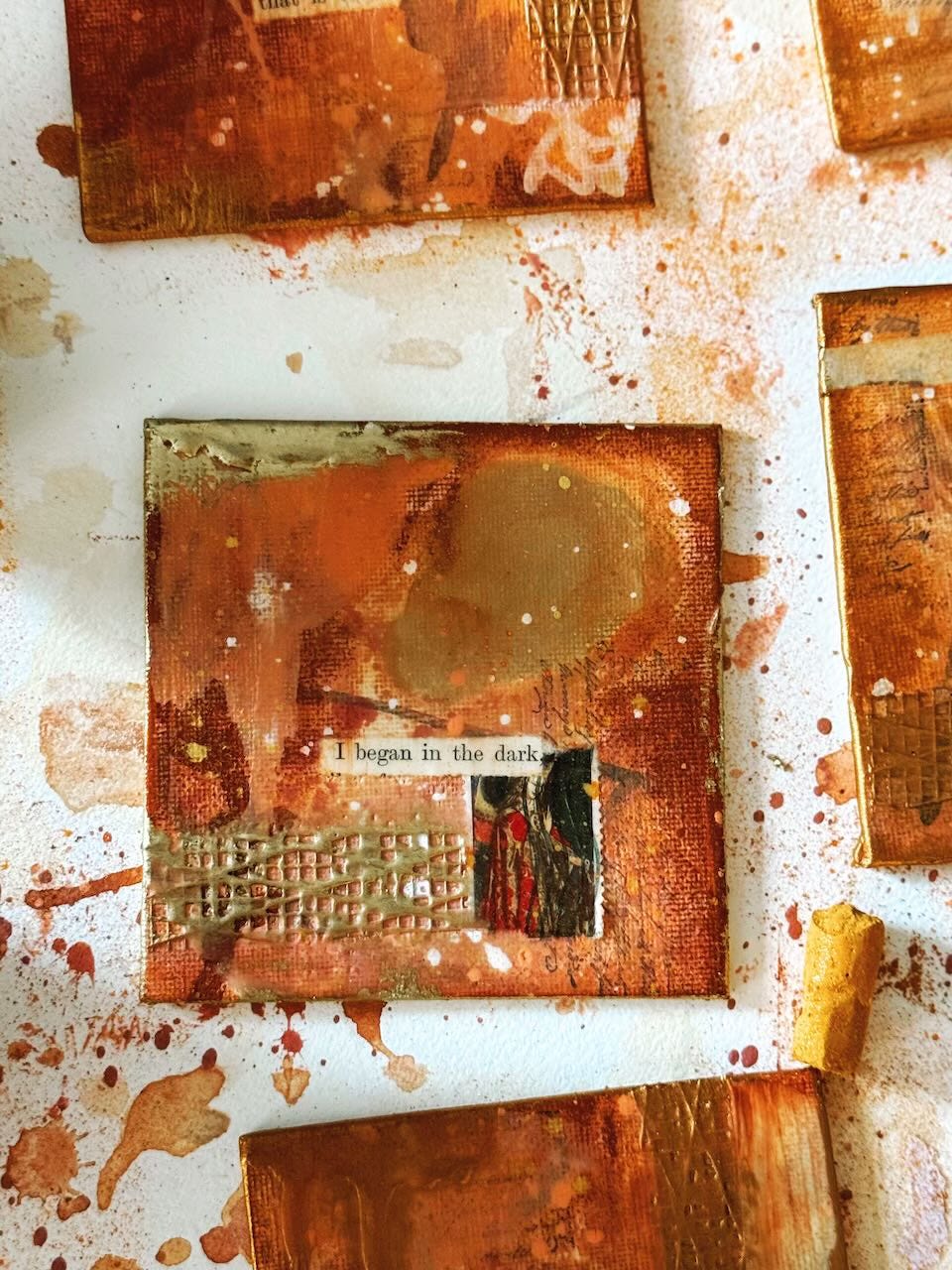
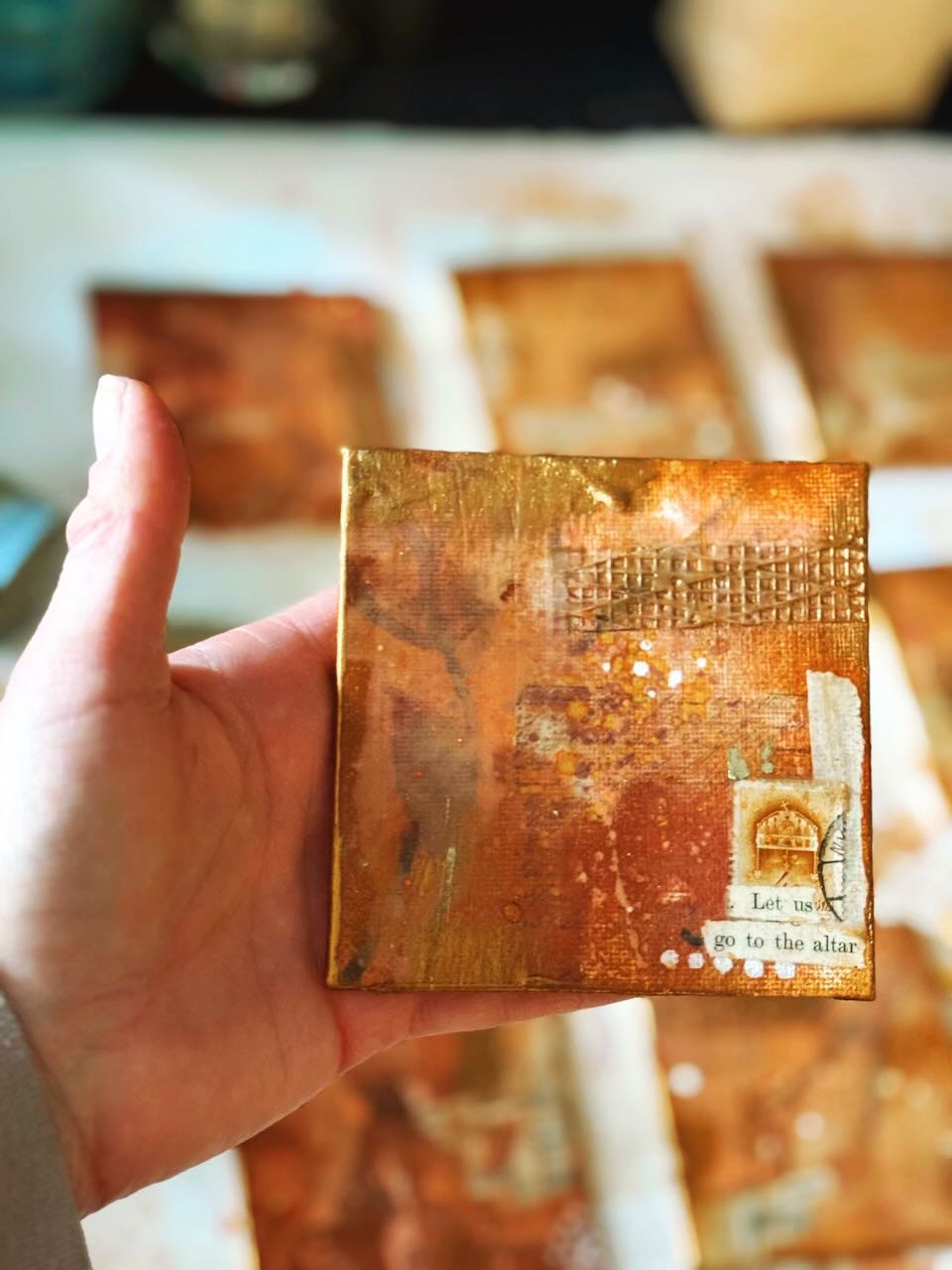
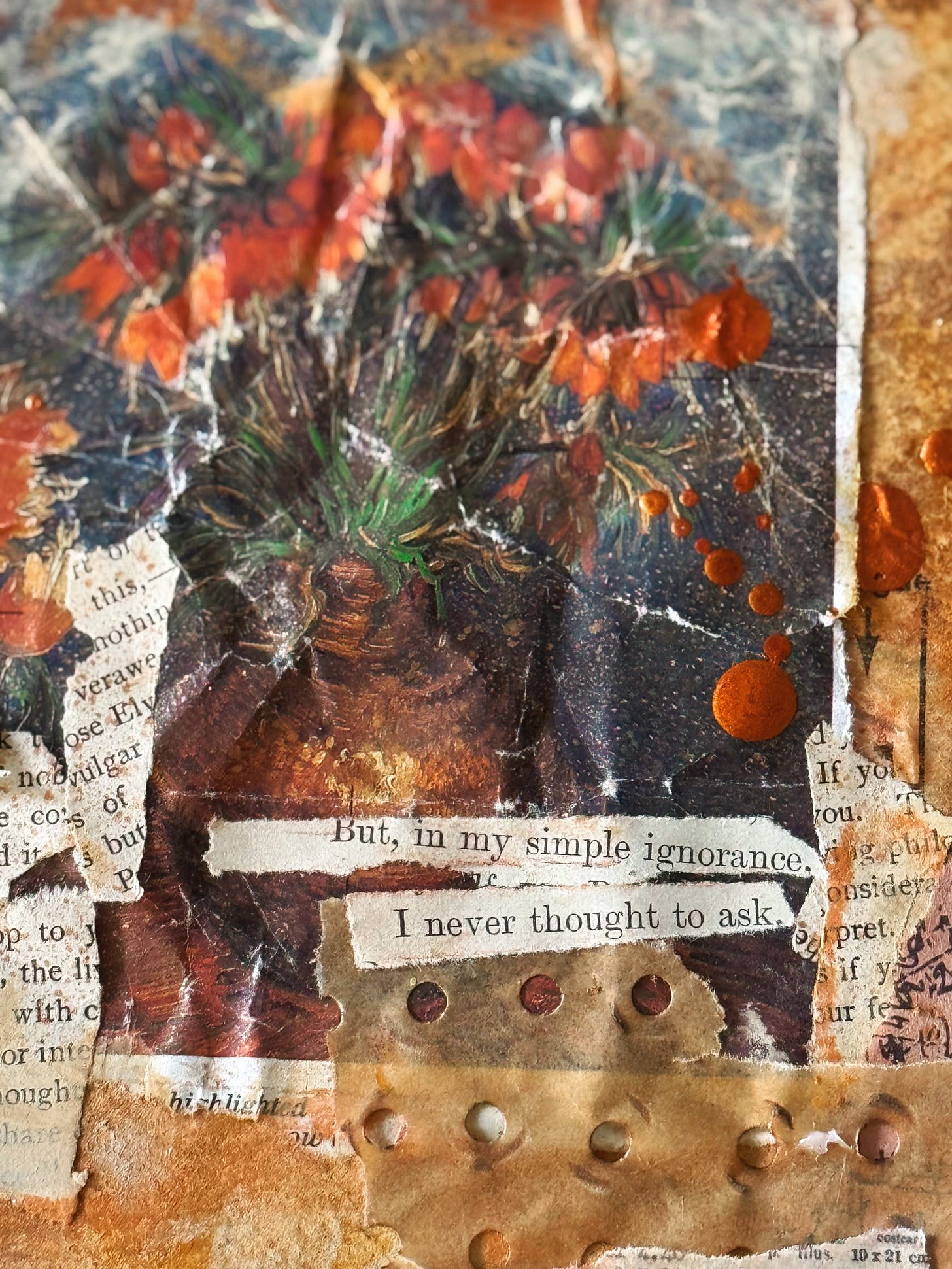
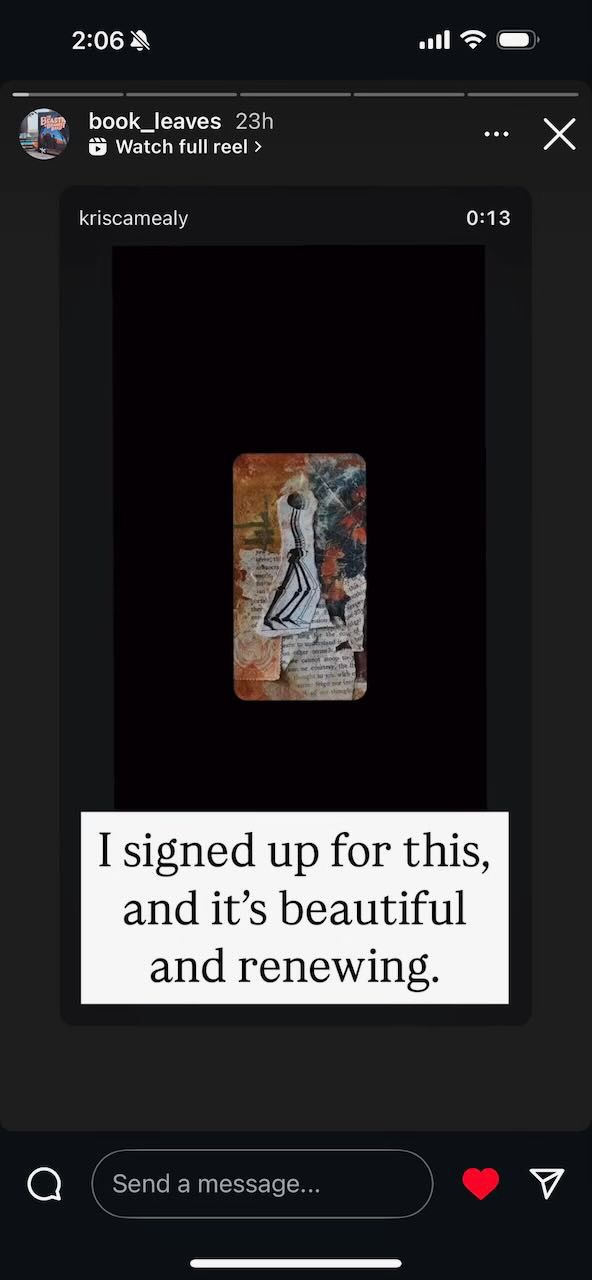
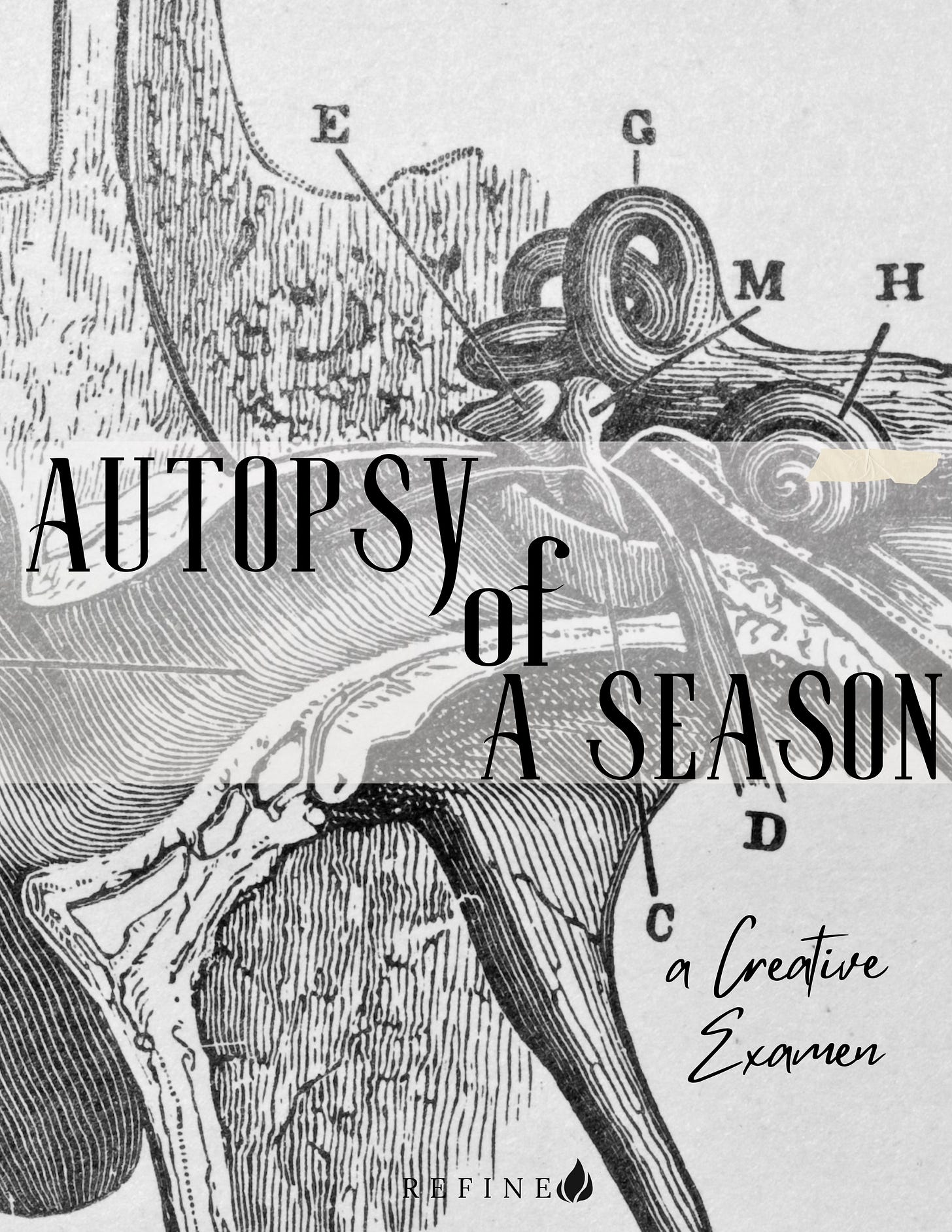
I love the art piece with the snippet of the walking person (first one in the post). Normally, to me, skeletons evoke Halloween, but this one is different, not associated with gore and death but still haunting.